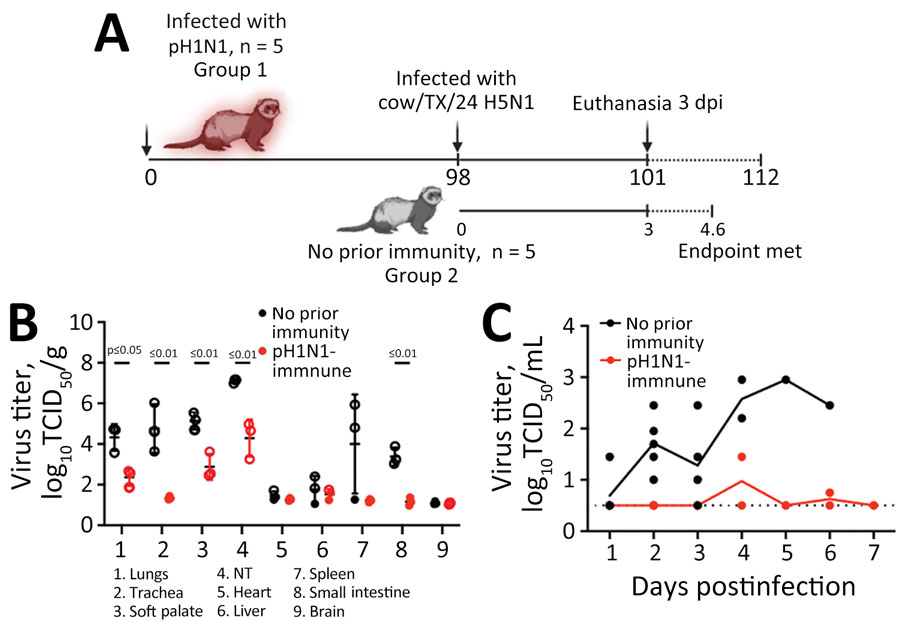Volume 31, Number 3—March 2025
Research
Influenza A(H5N1) Immune Response among Ferrets with Influenza A(H1N1)pdm09 Immunity
Figure 2

Figure 2. Infection timeline and virus replication titers in a study of influenza A(H5N1) immune response among ferrets with pH1N1 immunity. A) Schematic of experimental timeline for 2 groups of ferrets intranasally infected with H5N1 strain cow/Tx/24. Group 1 (n = 5) was previously infected with pH1N1 98 days before H5N1 infection and group 2 (n = 5) was immunologically naive. At 3 dpi, 3 animals from each group were humanely euthanized. We monitored the remaining ferrets from groups 1 and 2 until 14 dpi or until the endpoint criteria were reached. Schematic was created in BioRender (https://www.biorender.com). B, C) Viral titers from ferret tissues (B) and nasal secretions (C). B) Tissues were collected from H5N1-infected ferrets without (n = 3) and with (n = 3) pH1N1 immunity at 3 days postinfection. Unpaired t-test analysis was used to determine statistically significant (p<0.05) differences: lungs, p = 0.0124; trachea, p<0.008; soft palate, p = 0.0072; nasal turbinate, p = 0.0061; small intestine, p = 0.0014. C) Nasal wash samples were collected from H5N1-infected ferrets without (n = 5) and with (n = 5) pH1N1 immunity on the indicated dpi: 1–3 dpi, n = 5 from each group; 4 dpi, n = 2 from each group; 5 and 6 dpi, n = 2 for immune group and n = 1 from the naive group; 7 dpi, n = 2 from the immune group . Each circle represents a single ferret. Open circles indicate values above the limit of detection. Horizontal bars indicate means; whiskers indicate SDs of viral titers; dashed line represents the limit of detection. cow/Tx/24, A/dairy cattle/Texas/24-008749-001/2024(H5N1); dpi, days postinfection; NT, nasal turbinate; pH1N1, influenza A(H1N1)pdm09; TCID50, 50% tissue culture infectious dose.